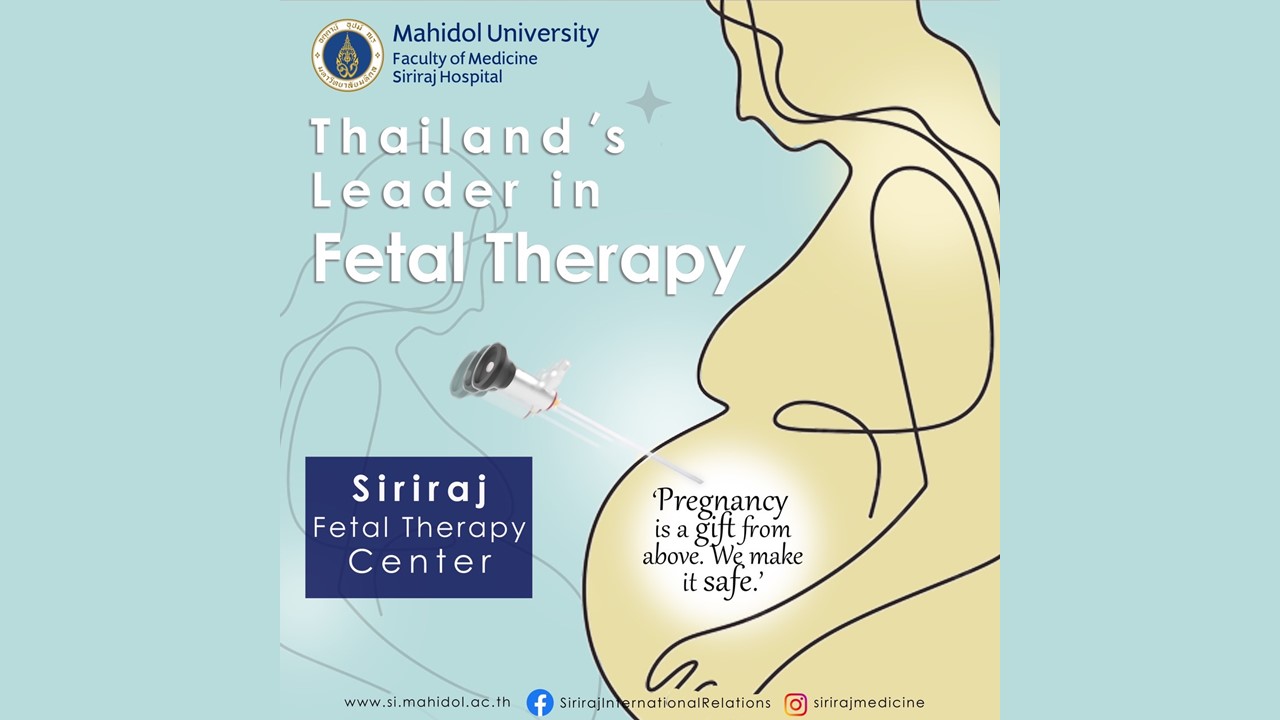“Love Before First Sight Does Exist”
It’s been said that babies are like little suns that, in a magical way, bring warmth, happiness, and light to the families. However, not every baby is born intact, since 1-2% of them may have some kind of physical anomalies some of which are severe enough to cause death shortly after birth. Thanks to the advancement in medicine that now we can provide intrauterine treatments to unborn babies resulting in an improved survival rate and fewer collateral consequences.
Siriraj Fetal Therapy Center began employing a fetoscope in 2006 and was the first in Thailand to be successful in treating Twins to Twins Transfusion Syndrome (TTTS) by coagulating the connecting vessels in the placenta with a laser beam to reduce imbalanced perfusion. Since then, the center has continued to apply more techniques including radiofrequency ablation (RFA), and bipolar coagulation, and has successfully treated more than 400 pairs of twin pregnancies until now. The center also provides various other intrauterine procedures, for example, 45 cases of intrauterine blood transfusion, 20 cases of shunt placement for treatment of pleural effusion or severe ascites, 5 cases of laser ablation of posterior urethral valve, and 4 cases of fetoscopic endoluminal tracheal occlusion (FETO) for severe congenital diaphragmatic hernia.
Congenital diaphragmatic hernia (CDH) is an uncommon congenital anomaly found in 1-5 of approximately 10,000 live births. The herniated abdominal organs compress fetal lungs and cause pulmonary hypoplasia which is fatal in many cases. Surgical treatment after birth remains the treatment of choice but the outcomes are not very satisfactory especially when pulmonary hypoplasia is severe. The new treatment is FETO which shows significant benefit in severe cases of CDH. During 27-29 weeks of pregnancy, with the use of a fetoscope, a small balloon is firmly placed in the fetal trachea to store fluid within the fetal lungs in the hopes of expanding the compressed lungs so that the baby can survive after birth. The balloon will be taken out or decompressed at 34-35 weeks of gestation. A multidisciplinary team approach after birth is crucial for the survival of babies with CDH. Postnatal management in the NICU includes intubation and gentle ventilation, correction of pulmonary hypertension, ventricular dysfunction, and acid-base imbalance, as well as the preservation of hemodynamics. Previous studies showed that when compared to expectant management, the survival rate after FETO increased from 0-15 % to 40%. Siriraj hospital as Thailand’s leading referral center has received 33 cases of CHD during the last 5 years. FETO was performed in 4 severe cases and 1 baby survived.
In addition to treatment, Siriraj provides procedural training for both local and foreign doctors. During the process of training, a model developed by Siriraj team will be used for simulation training to enhance their skills before any actual procedure. Many Thai hospitals are now capable of performing fetoscopic intrauterine procedures, and people no longer have to travel to Bangkok for treatment.
“In many circumstances, intrauterine therapy can save the newborns and keep them from long-term morbidities. However, evaluating the risks of complications against the benefits is still important. We wish to make a little miracle to help the mothers who’re carrying the blessing inside” said Assoc. Prof. Tuangsit Wattaganara, Head of Siriraj Fetal Therapy Center.
In the future, the center aims to incorporate innovative technologies into the utmost experiences and expertise to improve the core performances while also doing research to bring new insights to this field. The faculty’s philosophy of “… to the benefit of mankind” will always be implemented in this center in order to make the mothers and their babies as safe as possible.
